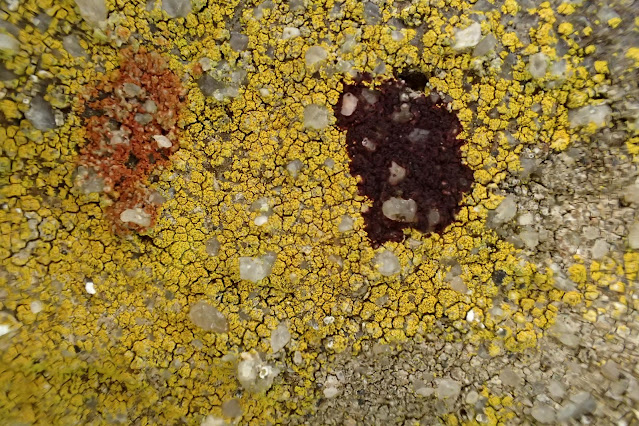2025: June Wed June 11 and Thur June 12: (Today and tomorrow:) Nature and public recording afternoons for all -beginners and experienced - St Mary's Church, Embsay "Churches Count on Nature:" -start at 2.30pm in the afternoon but try anytime after lunch.
Below
is a report on the day held in June 2024
St Mary's Church, Embsay with Eastby (near Skipton N Yorkshire) held their fourth "Churches Count on Nature:" event on Wednesday 12 June 2024 : Public sessions: 11-12pm; 3-5pm. ( plus school groups coming at other times).
 |
| The school children arrive at St Mary's and are introduced to the project. |
It turned out an excellent day. (Lots of pictures at end)
The village school (Embsay CofE Primary School brought a class (year 4 - 8-9yr olds) ) in the morning for an hour and a class in the afternoon (year 3 - 7-8 year olds). The General Public were invited for an hour just before lunch and two hours 3pm-5pm) in the afternoon.
The school groups - each consisting of a class of 23 and 28 children respectively - met and we introduced the sessions. We spent two minutes in silence listening for birds. Each child was asked how many different birds they could hear.
My "Merlin app" recorded: Jackdaw, Wood pigeon, Bluetit, Blackbird, Wren consistently. We also at some time saw Swifts, and occasionally recorded Goldfinch and Collared Dove.
Jackdaw: "Jack, Jack"; Woodpigeon: "Take Two Coos Taffy"
We then broke up into groups of 3 to 6 each group accompanied by a teacher or volunteer leader. They set off to one of the 1by1m quadrates (squares) that Liz Roodhouse had previously laid out. They had score sheets. I wandered from group to group supplying answers about plants, and admiring the millipede, centipede, wolf spider and worms and ants that they discovered.
The people who came enjoyed it and enjoyed discovering things. I have come away really encouraged by their interest in nature and in the creatures and plants that we found in the church yard.
I was impressed by the level of interest of the children, and the enthusiasm, helpfulness of the teachers.
We only had a few people coming to the public sessions.
But quality not quantity: par excellence.
They included: about 4 local people who had been to previous events and came maybe out of loyalty. They recorded their quadrats (1 m squares).
Two people who had read about it because I had put it on Facebook and forwarded it to local Facebook groups. They had already planned a cycle journey so diverted to come to our event! (At long, long last I had had some reward for effort at social media)
A family who were already very interested in natural history and who already knew quite a lot of the plants came. This family had already attended on Eco-Explorers session, but lived too far from Settle to come to after school events. .. But Embsay was fine for them.
A huge thank you to the organisers at the church, and to the organisers at the school who enabled the children to come; to the volunteers and to the people who came.
After the event I stayed on an hour and made a resurvey or the churchyard to record lichens and check the list I had made in March 2022. I found a total of 30 Species. (plus there are three that I did not see from previous years)
Now rather than spending more time on this post I need to finish my lichen list and send it to Liz so she can send it to the Churches Count on Nature people along with the Embsay Churchyard Quadrat Results.
------------------------------------
One boy asked me "How long have you been doing/learning this?" ("Since I was your age - I reflected - My mother used to encourage me to keep a "First FInd book" .
The children were divided into groups of 3 to 6 and allocated a helper-either a teacher from the school or a volunteer from the church/school governors. I was the roving "Expert". THe Church eco-group had prepared a table of resources - leaflets / books and a few labelled grasses .
One member of school staff said "We have walked along this church path before, and just seen green grass. . But we have not looked in detail and found all these things (centipedes, spiders, different grasses, lichens, flowers )
Another said "Our group divided the tasks really well and worked as a team".
One of the boys said "This was really good - much better than learning!!"
One boy asked me "How long have you been doing/learning this?"
"Since I was your age - I reflected - My mother used to encourage me to keep a "First Find book" .
See my reports of past events:































































